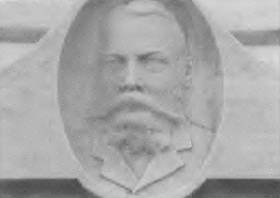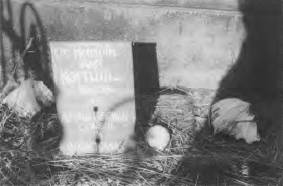- Author
- Pearn, John
- Subjects
- Colonial navies, History - pre-Federation
- Tags
-
- RAN Ships
- None noted.
- Publication
- March 1997 edition of the Naval Historical Review (all rights reserved)
Quarantine Stations were eventually established at Peel Island (in Moreton Bay, under Dr. Kevin Izod O’Doherty), at Thursday Island (under Dr. J. S. Wassell), at Keppell Bay, Rockhampton (under Dr. E. Humphrey).
When statehood was declared (1859) few of the colonial doctors in Australia had army experience and almost none had any experience of naval medicine. One exception was Dr. Ludvig Philip MD, who was practicing at Warialda in 1860 and who had served as a naval surgeon in the Danish Navy from 1848 until 1852. It was thus from the medical ranks of professionally naîve but enthusiastic volunteers that naval surgeons were enlisted to provide the medical support for the emergent State-based navies. Doctors who served as naval surgeons in pre-Federation Australia came essentially from the ranks of private medical practitioners. They were almost all well-established medical practitioners who, like their doctor-soldier brothers in the militia, trained at weekends or on annual encampments or their seaborne equivalents.
The Queensland Defence Force (Marine)
The northern State, from its inception in 1859, had felt vulnerable to invasion. The first threat came in December, 1861, when anxiety was felt about the potential for attack by warships of the United States. The Secretary of State for the colonies wrote to the Governors of all Australian states giving warning that there were:
.. grave reasons for appreciating that this country may shortly be involved in a war with the United States … and that an active enemy, by the employment of single privateers or cruisers, may find the means of inflicting occasional injury on exposed parts of the Empire”. One direct outcome of this was the recommendation, in 1862, by the new Queensland Governor, that a harbour of refuge and a coaling station be built and manned at Somerset on Cape York peninsula. In 1863, a detachment of Royal Marines under Lieutenant Pascoe was sent from England to Port Albany on Albany Island opposite Somerset. Their surgeon was Dr. Timotheus Haran RN. Although marines steadfastly maintained their distinct status as different from that of both soldiers and sailors, and of course do so today, in the broader sense Dr. Haran was one founder of Australian naval medicine. The settlement at Somerset was supplied by HMS ‘Salamander‘, a wooden paddle-wheeled sloop.

The second scare developed in the late 1870s and involved unease about French, German and principally Russian naval activity in the south-west Pacific. In May 1875 an armed (four gun) French steamship the ‘Coeltogon‘, put into Brisbane seeking help in the recapture of twenty escaped French convicts. This led to the citizenry of northern Australia expressing concern about the continent’s continued vulnerability to seaborne assault. Letters to the editors of various northern newspapers expressed widespread public concern to call formally for the institution of a home-grown naval force:
“The passage of hostile vessels up the river to the city of Brisbane to be prevented by a battery at Lytton and by torpedoes in the river. The anchorage at Moreton Bay to be protected by a gunboat and one or more torpedo boats;. for Maryborough and Rockhampton, the rivers leading up to those towns to be obstructed by torpedoes, covered by guns mounted on barges; companies of infantry being provided on land . . . for the General Defence of the coast; additional telegraph stations to be established along the coast; a gun vessel to be provided, which in time of peace, would be utilised for general Government purposes”.
Memorandum 24 April, 1882
from Colonel P. H. Scratchley
to the Colonial Secretary for Queensland
In 1882, the Colonial Treasurer (the Honourable A. Archer) strongly supported by the Premier, moved in the Queensland Parliament that £60,000 from surplus revenue be allocated for the purchase of two gunboats, one to be stationed at Brisbane and the other at Thursday Island. In 1883 the annexation of New Guinea by Queensland meant that German reprisals could be expected; and by 1885 the citizenry were in fear of an assault by the Russian Navy. The Brisbane Courier of 12 March, 1885 reported that the Pacific fleet of the Russian Navy:
.. are not fighting vessels in the strict acceptation of the term, not vessels that would willingly engage even our trumpery little fort at Lytton, but they are cruisers, strong enough to overpower and speedy enough to overtake most merchants ships on our coasts“.
Thus ‘Gayundah‘ of 360 tons and ‘Paluma‘ 300 tons were built, launched at Newcastle-upon-Tyne in 1884 and sailed to Moreton Bay to become the first of Her Majesty’s Queensland ships. “Gayundah” and “Paluma” were Aboriginal words meaning Lightning and Thunder. A second-class torpedo boat, the ‘Mosquito‘ was purchased on July 16, 1884. Whilst the newly built ships were en-route from England, a meeting was held in Brisbane on 29 November, 1884 – its object being to establish an infrastructure whereby volunteers with naval experience could be recruited to augment the crews of the new warships. Thus was formed the Queensland Naval Brigade. It was to consist of:
- Three ships – ‘Gayundah‘, ‘Paluma‘ and ‘Mosquito‘
- A Picquet Boat -‘Midge‘, shipped to Brisbane in 1887.
- The Government steamer, ‘Otter‘, fitted and armed as an auxiliary – tender of 290 tons.
- The Government steam yacht, ‘Lucinda‘, impressed for service when required.
- Five steam propelled barges of the Harbours and Rivers Department (each being fitted with a gun mounting, forward, on which in time of training or action could be mounted a 5-inch breech-loading gun weighing two and a half tons).
- 100 men, the great majority volunteers, based in Brisbane
- 100 men, the great majority volunteers based in ports at Friday (later Thursday) Island, Cooktown, Cairns, Townsville, Mackay, Rockhampton, Bundaberg and Maryborough.
The Queensland Navy, more formally the Queensland Naval Brigade, was the source of much unfair criticism in the newspapers of the day. Preoccupation with the colour of flags, internal bickering and ultimately the arrest of its two senior officers in separate incidents (well told in Vol. 17 No. 2 of this Review), and disaster and derision following the catastrophic Brisbane flood of 1894 – all such problems were compounded by an unsympathetic and in some cases derisory press. Like all navies, however, its efficiency depended, interalia, on the health of its seamen.
Naval Medicine in Queensland
When the first Naval surgeons enlisted for volunteer service in the Queensland Naval Brigade from 1885, their roles were potentially the tripartite ones of (i) treatment of wounds, (ii) prevention of ship-board diseases, and (iii) the management of potential quarantine issues and the treatment of sick passengers.
In all, twelve surgeons served with the Queensland Naval Brigade. These pioneering naval surgeons were all part-time volunteers, supplementing the ranks of the few full-time sailors who comprised the Naval Brigade. They had been born in Dublin, Germany, England and Scotland and served at Cooktown, Cairns, Townsville, Rockhampton, Maryborough and at Brisbane. The foundation naval surgeon was John Alexander Cairns Penny. He was born in 1861 in Dublin and was appointed as Pro-dissector of Anatomy at the Royal College of Ireland and later as Medical Officer in Charge of H. M. troops and Convalescent Hospital, Pigeon-House Fort, Dublin, and Commodore Surgeon in the Allen Line of Steamships. He emigrated to Maryborough in 1886 and was appointed medical referee to the AMP Society and surgeon to the Lady Musgrave Lying-in Hospital and foundation “Surgeon to the Naval Brigade” (The Queensland Defence Force (Marine)) in 1885. He was promoted on the 1 February 1898; and carried the formal naval rank of Lieutenant as distinct from that of surgeon.
Another of the pioneer Australian Naval Surgeons was Dr. Archibald Birt Brockway. Born in England, he graduated with his Licentiate of the Royal College of Physicians of London in 1889. He practiced initially at Muttaburra and then settled in Brisbane. He was appointed Surgeon to the Headquarters Staff of the Queensland Defence Force (Marine) in HMQS ‘Gayundah‘. At the time of Federation (1901) he held the formal title of Fleet Surgeon in the Queensland Defence Force (Marine). He was a pioneer of first aid teaching in the St. John Ambulance Association. For many years he was Honorary Secretary of the Queensland Branch of the British Medical Association, and served as State President in 1915. He was one of the founders of the Surf Life Saving Association in Australia. He served in World War I, rising to the rank of Lieutenant Colonel, but was discharged from the Army in 1918. Thereafter he used the formal naval title of Surgeon Commander.
The surgeons undertook medical examinations of recruits, trained with the sailors on board ship and attended the annual encampment at Fort Lytton at the mouth of the Brisbane River. The army had trained at Lytton from 1880. Fort Lytton was built – ”
To bar the enemy’s progress up the Brisbane River by a land battery and submarine mines across the river. Should the enemy attempt to land, it was intended to repel their ships and boats with a field force”.

Several other surgeons of the Queensland Navy progressed in their military careers and saw active service in South Africa and in World War I. The Queensland Navy did not of itself see action. Its pioneering colonial naval surgeons treated illness and wounds, but none sustained in action against an enemy.
Colonel Professor John Pearn AM RFD
Colonel Consultant
Office of the Surgeon General
Australian Defence Force
BIBLIOGRAPHY
Pearn J. Succor and Supply. The ‘Amity’, Colonel Brig., and the role in Australian Exploration. In “The Impact of the Past upon the Present”. Canberra, Australian Society of the History of Medicine, 1992 (ISBN 0 646 10333 4) 234 237.
Pearn J.H. The Foundation of Queensland. In “In the Capacity of a Surgeon”. Brisbane, Amphion Press, 1988. Chapter 6: 71-92.
Johnson D. H. Volunteers at Heart. The Queensland Defence Forces 1860-1901. Brisbane, University of Queensland Press.1975: 30.
Bowen, Governor George, Despatches to the Secretary of State for the Colonies. Series 1 No. 1/59. Volume 1. 19 December 1859: 1.
Pixel NS. Formation of Naval Brigade. In “The Queensland Marine Defence Force”. J Roy Hist. Soc. Qld. 1960-61; 6:669-724.
Pearce R.L. “Yellow Fever” in northern Australia. The tragic voyage of the transport ‘L’Allier’, in 1879. In “Outback Medicine”. Ed. J. Pearn, Brisbane, Amphion Press, 1994. Chapter 4; 55-64.
Armstrong L. Fort Lytton East Encampments. J. Roy Hist. Soc. Qld, 1990; 14; 204-206.




